Julian Byng, 1st Viscount Byng of Vimy
Field Marshal Julian Hedworth George Byng, 1st Viscount Byng of Vimy, GCB, GCMG, MVO (11 September 1862 – 6 June 1935) was a British Army officer who served as Governor General of Canada, the 12th since Canadian Confederation.
Field Marshal The Right Honourable The Viscount Byng of Vimy GCB, GCMG, MVO | |
|---|---|
 | |
| 12th Governor General of Canada | |
| In office 2 August 1921 – 5 August 1926 | |
| Monarch | George V |
| Prime Minister | Canadian • Arthur Meighen • W. L. M. King British • David Lloyd George • Bonar Law • Stanley Baldwin • Ramsay MacDonald |
| Preceded by | The Duke of Devonshire |
| Succeeded by | The Viscount Willingdon |
| More... | |
| Personal details | |
| Born | Julian Hedworth George Byng 11 September 1862 Wrotham Park, Hertfordshire, England |
| Died | 6 June 1935 (aged 72) Thorpe Hall, Essex, England |
| Spouse(s) | Evelyn Byng, Viscountess Byng of Vimy |
| Profession | Officer |
| Signature | |
| Military career | |
| Allegiance | United Kingdom |
| Service/ | British Army |
| Years of service | 1879–1919 |
| Rank | Field Marshal |
| Commands held | Third Army Canadian Corps XVII Corps IX Corps Egypt Command 1st Cavalry Brigade 2nd Cavalry Brigade 10th Royal Hussars South African Light Horse |
| Battles/wars | Mahdist War • Battles of El Teb • Battle of Tamai Second Boer War First World War • First Battle of Ypres • Gallipoli Campaign • Battle of Vimy Ridge • Battle of Cambrai • Hundred Days Offensive |
| Awards | Knight Grand Cross of the Order of the Bath Knight Grand Cross of the Order of St Michael and St George Member of the Royal Victorian Order Mentioned in Despatches (8) |
Known to friends as "Bungo", Byng was born to a noble family at Wrotham Park in Hertfordshire, England and educated at Eton College, along with his brothers. Upon graduation, he received a commission as a militia officer and saw service in Egypt and Sudan before enrolling in the Staff College at Camberley. There, he befriended individuals who would be his contemporaries when he attained senior rank in France. Following distinguished service during the First World War—specifically, with the British Expeditionary Force in France, in the Battle of Gallipoli, as commander of the Canadian Corps at Vimy Ridge, and as commander of the British Third Army—Byng was elevated to the peerage in 1919. In 1921, King George V, on the recommendation of Prime Minister David Lloyd George, appointed him to replace the Duke of Devonshire as Canada's governor general, a post he occupied until the Viscount Willingdon succeeded him in 1926. Byng proved to be popular with Canadians due to his war leadership, though his stepping directly into political affairs became the catalyst for widespread changes to the role of the Crown in all of the British Dominions.
After his viceregal tenure, Byng returned to the UK to be appointed Commissioner of Police of the Metropolis and was promoted within the peerage to become Viscount Byng of Vimy. Three years after attaining the rank of field marshal, he died at his home, Thorpe Hall on 6 June 1935.
Early life
Byng was born at the family seat of Wrotham Park, in Hertfordshire, as the seventh son and 13th and youngest child of the Earl of Strafford (who, due to the size of his family, ran a relatively frugal household) and Harriet Elizabeth Cavendish, daughter of the Lord Chesham.[1] Until the age of 17, Byng was enrolled at Eton College, although he did not enter the sixth form. At Eton Byng first received the nickname "Bungo"—to distinguish him from his elder brothers "Byngo" and "Bango"[2]—but his time at the college was undistinguished, and he received poor reports; indicative of his attitude towards academics, he once traded his Latin grammar book and his brother Lionel's best trousers to a hawker for a pair of ferrets and a pineapple. Byng later claimed that he had been the school's worst "Scug", the colloquial term for an undistinguished boy.[3]
Military career
With three sons already in the army and another already put up for the 7th Queen's Own Hussars, Byng's father did not think he could afford a regular army commission for his youngest son. Thus, at the age of 17, Byng was instead sent into the militia and on 12 December 1879 commissioned as a second lieutenant into the 2nd (Edmonton) Royal Middlesex Rifles.[3][4][n 1] He was promoted to lieutenant on 23 April 1881.[5] During this period, Byng also developed a liking for theatre and music halls, and by the age of twenty had taken an interest in the banjo.[6]
At a meeting of the Jockey Club in 1882, Byng's father was asked about his sons by his long-time friend, Albert Edward, Prince of Wales. Upon hearing that Byng had not yet found a permanent career, the Prince offered a place for him in his own regiment, the 10th Royal Hussars. This was the most expensive regiment in the army, and the Earl of Strafford could only afford to give Byng two hundred of the six hundred pounds he would need each year, but the Prince's offer could not be refused. Byng himself was delighted at the opportunity, as both his uncle, Lord Chesham, and his cousin, Charles Cavendish, had served in the regiment. By raising money through buying polo ponies cheaply, using his excellent horsemanship to train them, and then selling them on at a profit,[7] Byng was able to transfer to the 10th Royal Hussars on 27 January 1883,[8] and less than three months later he joined the regiment in Lucknow, India.[9]
It was while the regiment was on the way home to Great Britain in 1884 that the Hussars were diverted to the Sudan to join the Suakin Expedition, and on 29 February Byng, along with the rest of his regiment, rode in the first line of the charge at the first Battle of El Teb. The attack, which resulted in the deaths of both of Byng's squadron's other officers, was unsuccessful,[10] and fighting continued, with Byng's horse being killed under him on 13 March at the Battle of Tamai. Most of the rebels were then dispersed shortly after, and on 29 March the regiment re-embarked for Britain, arriving on 22 April, and proceeding to their new base at Shorncliffe Army Camp in Kent. During the summer of 1884, Byng spent much of his time playing polo and training recruits and horses, and in July, for his services in Sudan, he was mentioned in despatches.[11]
In June 1885, the regiment was relocated to the South Cavalry Barracks at Aldershot,[11] where the Prince of Wales' eldest son, Prince Albert Victor, joined the regiment and thereafter the Prince of Wales and his other son, Prince George, became frequent visitors. Byng struck up a friendship with both Albert Victor and George, but did not socialise with them much outside of army circles. Byng was appointed as the regimental adjutant on 20 October 1886,[12] only nine days before the death of his father, who left Byng a watch and £3,500.[13] The regiment then moved again in 1887 to the barracks at Hounslow, where, after suspecting that contractors were selling him inferior meat, Byng spent several early mornings at the Smithfield market to learn the meat trade, eventually proving his case and having the contractors changed.[14] It was also at this time that Byng became acquainted with the Lord Rowton, who, along with the Guinness Trust, was trying to improve housing for skilled workers in London. Byng accompanied Rowton around the poorest areas of the city and suggested that retired senior soldiers from the rank-and-file be hired to maintain order in the Rowton Houses that Rowton had set up, thus starting a long-lived tradition.[15]
Staff College
In 1888, the Hussars again moved, this time to York, where Byng kept his men busy by raising successful cricket and football teams. Byng was promoted to captain on 4 January 1890,[16] around the time he began to consider entering the Staff College at Camberley. He thus, in order to dedicate his time to preparatory studies, which continued when the regiment moved in 1891 to Ireland, resigned his commission as adjutant and turned down an invitation from Prince Albert Victor to join him in India as an equerry. After being detached for a time in order to serve and gain more experience in the infantry and artillery,[17] Byng sat and passed his entrance exams into the Staff College and secured a nomination in September 1892.[18] A year before Byng entered the college, Albert Victor fell victim to the influenza pandemic that raged around the world, and, at the Prince's funeral on 20 January 1892, Byng commanded the pallbearers (all from the 10th Royal Hussars),[19] which was a significant display of trust shown Byng by the Prince of Wales.[20]
Once Byng was enrolled at the Staff College, he found amongst his fellow students men with whom he would be closely associated more than two decades later—Henry Rawlinson, Henry Hughes Wilson, Thomas D'Oyly Snow, and James Aylmer Lowthorpe Haldane—and in 1894, while en route to visit a friend at Aldershot, travelled with a cadet at the nearby Royal Military College, Sandhurst, Winston Churchill.[21] Byng also journeyed with his class to see the battlefields of the Franco-Prussian War at Alsace-Lorraine and accompanied to the United States one of his lecturers who was compiling information on a book on Stonewall Jackson.[22] By December 1894, Byng graduated from the Staff College and was immediately appointed to command the A Squadron of the hussars. Only three years later, though, the regiment returned to Aldershot and Byng left to become adjutant of the 1st Cavalry Brigade, shortly before becoming the Deputy Assistant Adjutant-General (DAAG) of the Aldershot Command, and was promoted to the rank of major on 4 May 1898.[23] Later that same year, Byng met at a local party Marie Evelyn Moreton, the only daughter of Sir Richard Charles Moreton, who had himself served as comptroller at the Canadian royal and viceroyal residence of Rideau Hall, under the then Governor General of Canada the Marquess of Lorne.[24] Evelyn, as she was known, later described her early encounters with Byng:
When we met of a morning out riding, if he was free, the fun began—though it wasn't always fun for me because I was bewildered, as he was never the same two days running. Talk of women being mutable—he could have given points and a beating to any one of them! On Monday he would be in his most enchanting mood; Tuesday he would treat me as a pal and a man; Wednesday he would hardly remember that I existed; Thursday he would be icily polite; Friday he would thaw a little and by Saturday be back in Monday's delightful mood! What could anybody make of such vagaries?[25]
Commanding officer and First World War
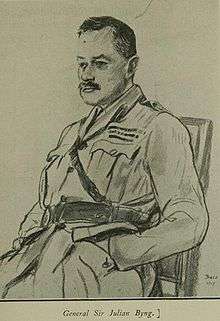
Byng was deployed in November 1899 to South Africa, where he was to act as a provost marshal,[26] but was instead immediately given the local rank of lieutenant colonel and tasked with raising and commanding the South African Light Horse during the Second Boer War.[27] Byng thereafter served on the front lines, during which time he ended up in command of a group of columns, was mentioned in despatches five times (including by Lord Kitchener on 23 June 1902[28]), and in November 1900 was promoted to brevet lieutenant colonel and in February 1902 to brevet colonel.[29] The beginning of 1902 brought more significant events for Byng, with his return to England in March,[30] an audience with King Edward VII the following month,[31] at which he was appointed to the Royal Victorian Order as a member 4th class (MVO),[32] and his marriage to Evelyn Moreton at St Paul's Church, Knightsbridge, on 30 April 1902.[33] Following a second visit to the King in early October,[34] Byng was sent back to India to command the 10th Royal Hussars at Mhow and was appointed to the rank of a substantive lieutenant colonel on 11 October 1902.[35]
In his first two years of marriage, Byng's wife suffered several miscarriages, resulting in the declaration that she would be unable to bear children. By January 1904, Byng had also, while playing polo, broken his right elbow so severely that it was feared he would have to quit the Army. After four months' treatment in England, though, he was pronounced to be again fit for duty and in May became the first commandant of the new cavalry school at Netheravon.[36] The posting was to be only a brief one, as, on 11 May 1905, Byng was made commander of the 2nd Cavalry Brigade at Canterbury, with the simultaneous temporary rank of brigadier general and substantive rank of colonel.[37] After appointment as a Companion of the Order of the Bath (CB) in 1906, he was again back in Aldershot, in command of the 1st Cavalry Brigade.[38]
It was April 1909 when Byng was promoted to major-general and,[39] though he was placed on half pay, Byng—with added income from editing the Cavalry Journal and serving as the first north Essex District Commissioner for the Boy Scouts—purchased his first house, Newton Hall, in Dunmow, Essex. He would, however, only reside there for two years, as, exactly the same amount of time after taking command of the East Anglian Infantry Division of the Territorial Force in October 1910,[40] Byng became General Officer Commanding the British Troops in Egypt,[41] where he remained until the outbreak of the First World War. He then returned briefly to the United Kingdom to take leadership of the 3rd Cavalry Division before going with the British Expeditionary Force to France and the First Battle of Ypres. His actions there were rewarded in March 1915 with appointment as a Knight Commander of the Order of St. Michael and St. George.[42]
.jpg)
After three months serving as commander of the Cavalry Corps, beginning in May 1915, at which time he was also made a temporary lieutenant-general,[43] Byng was off to Gallipoli to head the IX Corps and supervise the successful British, Australian, and New Zealand forces withdrawal from the ill-fated campaign. For this, he was on 1 January 1916 elevated within the Order of the Bath to the rank of Knight Commander,[44] but was not allowed much rest, as he spent the next month commanding the Suez Canal defences before returning to the Western Front to lead the XVII Corps. By June, he was in command of the Canadian Corps and was promoted when, for distinguished service, the King made substantive Byng's rank of lieutenant-general. Byng's greatest glory then came when he, along with his subordinate officer, the Canadian Major-General Arthur Currie, led the Canadian victory in April 1917 at the Battle of Vimy Ridge, an historic military milestone for the Dominion that inspired nationalism at home.[24]
In June 1917, and holding the temporary rank of general,[45] Byng took command of Britain's largest army, the Third Army, until the cessation of hostilities and, with those troops, at the First Battle of Cambrai, conducted the first surprise attack using tanks.[24] The Battle of Cambrai was later considered a turning point in the war and Byng was honoured on 24 November 1917 by having his temporary rank of general made substantive;[46] however according to the World War I memoir of A S Bullock, the First Battle of Cambrai failed to breach the Hindenburg Line, due to lack of reserves, and it was at General Byng's second attempt to take Cambrai in 1918 that the British triumphed, owing to sufficient troops and supplies being in place 'to sustain the attack day and night until the Germans were broken'.[47]
As a result of the success at Cambrai, Byng was made Knight Grand Cross of the Order of the Bath in the 1919 New Year's Honours.[48] In the United States, Byng's exploits during the First World War were commemorated near the town of Ada, Oklahoma, when in 1917 a post office and power plant were named after him, leading to the later emergence of the town of Byng.[49] Further, Byng was in his own right elevated on 7 October 1919 to the peerage as Baron Byng of Vimy, of Thorpe-le-Soken in the County of Essex.[50] The next month, though he was offered the Southern Command, Byng retired from the military and moved to Thorpe Hall.[51] In April 1921, he unveiled the Chipping Barnet War Memorial, near to his family seat of Wrotham Park.[52]
Governor General of Canada
After Byng was made in July 1921 a Knight Grand Cross of the Order of St. Michael and St. George, it was announced on 2 August that King George V had, by commission under the royal sign-manual and signet, approved the recommendation of his British prime minister, David Lloyd George, to appoint Byng as his representative in Canada.[53] The designation proved less controversial than his predecessor, the Duke of Devonshire, due partly to the General's popularity, but also because the practice of prior consultation with the Canadian prime minister, at that time Arthur Meighen, was revived. Byng had not been Meighen's first choice for presentation to the King, since he preferred someone with more civilian credentials. Nevertheless, Byng was eventually chosen because he was both willing and available.[54]
_cropped.jpg)
The Governor General travelled the length and breadth of the country, meeting with Canadians wherever he went. He also immersed himself in Canada's culture and came to particularly love hockey, rarely missing a game played by the Ottawa Senators. He was also fond of the Royal Agricultural Winter Fair, held each year in Toronto, and established the Governor General's Cup to be presented at the competition. He was the first Governor General of Canada to appoint Canadians as his aides-de-camp (one of whom was future Governor General Georges Vanier) and approached his viceregal role with enthusiasm, gaining popularity with Canadians on top of that received from the men he had commanded on the European battlefields.[24]
King–Byng Affair
While it had been acceptable prior to the turn of the 20th century for Canadian governors general to involve themselves in political affairs, being, as they were, representatives of the King in his British Council, Byng's tenure as governor general was notable in that he became the first to step directly into political matters since the country had gained a degree of autonomy following the First World War. In the summer of 1926 he denied the recommendation of his prime minister, William Lyon Mackenzie King, who sought to have parliament dissolved in order to avoid a vote of non-confidence in his government. The Governor General's course of action in what came to be colloquially known as the King–Byng Affair remains debated, though the consensus amongst constitutional historians is that Byng's moves were appropriate under the circumstances.[54] Mackenzie King, however, made much of the scenario and its outcome in the election that eventually followed on 14 September, in which King's Liberal Party won a plurality of seats in the House of Commons, while Meighen lost his seat. As a result, King was once again appointed prime minister.[55] At the 1926 Imperial Conference, King then went on to use Byng and his refusal to follow his prime minister's advice as the impetus for widespread constitutional change throughout the British Commonwealth.[24] Byng himself said of the matter: "I have to await the verdict of history to prove my having adopted a wrong course, and this I do with an easy conscience that, right or wrong, I have acted in the interests of Canada and implicated no one else in my decision."[56]
Post-viceregal life
Byng returned to England on 30 September 1926, and in January 1928 was created Viscount Byng of Vimy, of Thorpe-le-Soken in the County of Essex.[57] Later that year, he was appointed as the Commissioner of the Metropolitan Police and,[58] before his retirement in 1931, introduced a number of changes to the force, including a system of promotion based on merit rather than length of service, improvement in discipline, retirement of inefficient senior officers, an irregularity to policemen's beats (which had previously allowed criminals to work out the system), police boxes, the extensive use of police cars, and a central radio control room. In July 1932, Byng was once more promoted in the British military to the rank of field marshal[59]—the highest rank an officer can attain—before he died suddenly of an abdominal blockage at Thorpe Hall on 6 June 1935.[24]
Lord Byng of Vimy was buried at the 11th Century Parish Church of St. Leonard in Beaumont-cum-Moze.[60]
Honours
| Viceregal styles of The Viscount Byng of Vimy (1921–1926) | |
|---|---|
| Reference style | His Excellency The Right Honourable Son Excellence le très honourable |
| Spoken style | Your Excellency Votre Excellence |
- Appointments



- July 1921 – 6 June 1935: Knight Grand Cross of the Most Distinguished Order of Saint Michael and Saint George (GCMG)[53]
.svg.png)
- Medals








- Awards








- Foreign honours
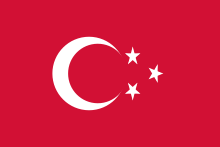

.svg.png)


.svg.png)
.svg.png)
Honorary military appointments
.svg.png)
.svg.png)
.svg.png)
Honorary degrees
.svg.png)
.svg.png)
Honorific eponyms
- Geographic locations
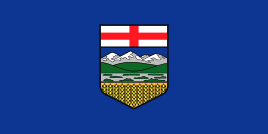
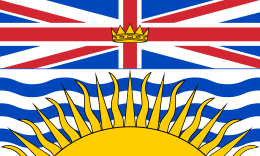
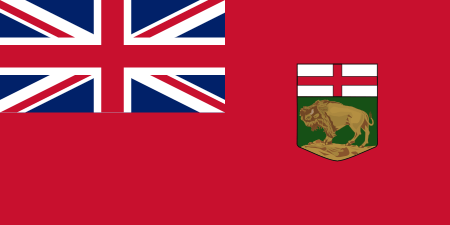
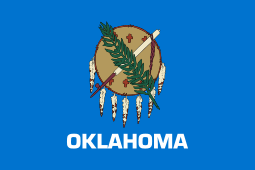
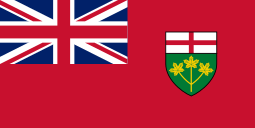
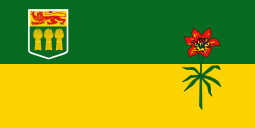
- Schools



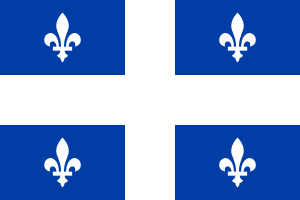
See also
- List of World War I battles
Notes
- In the book Byng of Vimy: General and Governor General by Jeffrey Williams, Byng's date of commissioning is given as 27 August 1879.[3]
References
- Williams 1983, pp. 2–3
- Williams 1983, p. 5
- Williams 1983, p. 6
- "No. 24794". The London Gazette. 23 December 1879. p. 7536.
- "No. 24968". The London Gazette. 3 May 1881. p. 2118.
- Turner 2005, p. 19
- Williams 1983, p. 9
- "No. 25192". The London Gazette. 26 January 1883. p. 464.
- Williams 1983, p. 7
- Williams 1983, p. 13
- Williams 1983, p. 14
- "No. 25635". The London Gazette. 19 October 1886. p. 5056.
- Williams 1983, pp. 15–16
- Williams 1983, p. 18
- Williams 1983, pp. 18–19
- "No. 26018". The London Gazette. 28 January 1890. p. 476.
- Williams 1983, pp. 19–20
- "Naval & Military Intelligence". Official Appointments and Notices. The Times (33733). London. 2 September 1892. col D, p. 5.
- "No. 26254". The London Gazette (Supplement). 4 February 1892. p. 602.
- Williams 1983, p. 21
- Williams 1983, p. 23
- Williams 1983, p. 22
- Williams 1983, p. 24
- Office of the Governor General of Canada. "Marshal, The Viscount Byng of Vimy". Queen's Printer for Canada. Retrieved 7 April 2009.
- Williams 1983, pp. 24–25
- "No. 27126". The London Gazette. 13 October 1899. p. 6179.
- "No. 27152". The London Gazette. 9 January 1900. p. 149.
- "No. 27459". The London Gazette. 29 July 1902. pp. 4835–4837.
- "No. 27406". The London Gazette. 14 February 1902. p. 940.
- "The War – Officers on passage home". The Times (36718). London. 18 March 1902. p. 11.
- "Court Circular". The Times (36751). 25 April 1902. p. 8.
- "No. 27430". The London Gazette. 2 May 1902. p. 2933.
- "Court Circular". The Times (36756). London. 1 May 1902. p. 9.
- "Court Circular". The Times (36893). London. 8 October 1902. p. 7.
- "No. 27481". The London Gazette. 10 October 1902. p. 6410.
- "No. 27682". The London Gazette. 3 June 1904. p. 3555.
- "No. 27827". The London Gazette. 15 August 1905. p. 5618.
- "No. 28012". The London Gazette. 12 April 1907. p. 2505.
- "No. 28238". The London Gazette. 2 April 1909. p. 2591.
- "No. 28424". The London Gazette. 14 October 1910. p. 7254.
- "No. 28663". The London Gazette. 15 November 1912. p. 8375.
- "No. 29102". The London Gazette. 16 March 1915. p. 2621.
- "No. 29432". The London Gazette (Supplement). 7 January 1916. p. 418.
- "No. 29507". The London Gazette (Supplement). 14 March 1916. p. 2872.
- "No. 30178". The London Gazette (Supplement). 10 July 1917. p. 6956.
- "No. 30398". The London Gazette (Supplement). 23 November 1917. p. 12297.
- Bullock, Arthur (2009). Gloucestershire Between the Wars: A Memoir. The History Press. ISBN 978-0-7524-4793-3. (Pages 77-79)
- "No. 31092". The London Gazette (Supplement). 31 December 1918. p. 1.
- Milligan, Dorothy (2007). "Julian BYNG". Encyclopedia of Oklahoma History & Culture. Oklahoma City: Oklahoma Historical Society. Archived from the original on 5 January 2009. Retrieved 15 April 2009.CS1 maint: ref=harv (link)
- "No. 31610". The London Gazette. 21 October 1919. p. 12890.
- "No. 31640". The London Gazette (Supplement). 11 November 1919. p. 13768.
- The stories of our fallen heroes. Percy Reboul & John Heathfield, times-series.co.uk, 5 November 2007. Retrieved 4 September 2016.
- "No. 32424". The London Gazette. 16 August 1921. p. 6483.
- Cooke, O.A.; Hillmer, Norman. "Byng of Vimy, Julian Hedworth George, Viscount". In Marsh, James H. (ed.). The Canadian Encyclopedia. Toronto: Historica Foundation of Canada. Retrieved 16 April 2009.CS1 maint: ref=harv (link)
- Parliament of Canada. "Elections and Ridings: Electoral Results: Electoral Results by Party". Queen's Printer for Canada. Retrieved 13 July 2014.
- Nicolson, Harold (1952). King George the Fifth, His Life and Reign. London: Constable & Co. Ltd. pp. 475–477. ASIN B001YV21JC.
- "No. 33348". The London Gazette. 17 January 1928. p. 366.
- "No. 33437". The London Gazette. 9 November 1928. p. 7302.
- "No. 33872". The London Gazette. 11 October 1932. p. 6416.
- "The United Benefice of Tendring, Little Bentley and Beaumont-cum-Moze". Archived from the original on 7 July 2013. Retrieved 19 May 2013.
- "No. 27926". The London Gazette (Supplement). 26 June 1906. p. 4460.
- "Board of Governors". Scouts Canada. Archived from the original on 29 October 2011. Retrieved 2 March 2011.
- "Artifact Number20060147-001". Tilston Memorial Collection of Canadian Military Medals. Canadian Museum of Civilization Corporation. Retrieved 3 December 2013.
- "No. 27282". The London Gazette. 8 February 1901. p. 972.
- "No. 27459". The London Gazette. 29 July 1902. p. 4837.
- "No. 29455". The London Gazette (Supplement). 28 January 1916. p. 1195.
- "No. 29429". The London Gazette (Supplement). 4 January 1916. p. 306.
- "No. 30015". The London Gazette (Supplement). 10 April 1917. p. 3475.
- "No. 30554". The London Gazette (Supplement). 1 March 1918. p. 2718.
- "No. 30963". The London Gazette (Supplement). 18 October 1918. p. 12425.
- "No. 31111". The London Gazette (Supplement). 3 January 1919. p. 333.
- "No. 29945". The London Gazette (Supplement). 13 February 1917. p. 1599.
- "No. 30568". The London Gazette (Supplement). 8 March 1918. p. 3095.
- "No. 31150". The London Gazette (Supplement). 28 January 1919. p. 1445.
- "No. 31222". The London Gazette (Supplement). 7 March 1919. p. 3279.
- "No. 31451". The London Gazette (Supplement). 11 July 1919. p. 8937.
- "No. 31615". The London Gazette (Supplement). 21 October 1919. p. 13005.
- Acović, Dragomir (2012). Slava i čast: Odlikovanja među Srbima, Srbi među odlikovanjima. Belgrade: Službeni Glasnik. p. 591.CS1 maint: ref=harv (link)
- "Honorary Degree Recipients 1850 – 2016" (PDF). University of Toronto. Retrieved 17 June 2017.
- "University of Alberta Senate: Past honorary Degree Recipients". University of Alberta. Archived from the original on 27 May 2011. Retrieved 28 April 2009.
- Place-names of Alberta. Ottawa: Geographic Board of Canada. 1928. p. 27.
- "Camp Byng". Retrieved 20 May 2013.
- "Byng Place closed for reconstruction on Tuesday". Metro. 18 May 2012. Retrieved 20 May 2013.
- "Pontotoc County, Oklahoma Town History". Retrieved 1 June 2015.
- "Byng Avenue, Toronto". Retrieved 20 May 2013.
- "Byng Avenue, Saskatoon". Retrieved 20 May 2013.
- "Welcome to Lord Byng Elementary School". Retrieved 20 May 2013.
- "Lord Byng Secondary School". Retrieved 20 May 2013.
- "General Byng School". Archived from the original on 19 May 2013. Retrieved 20 May 2013.
- "Baron Byng High School". Archived from the original on 17 January 2013. Retrieved 20 May 2013.
Sources
- Turner, Alexander (2005). Vimy Ridge 1917: Byng's Canadians Triumph at Arras. Osprey Publishing. ISBN 978-1841768717.CS1 maint: ref=harv (link)
- Williams, Jeffery (1983). Byng of Vimy: General and Governor General. Leo Cooper in association with Secker & Warburg. ISBN 978-0850523003.CS1 maint: ref=harv (link)
External links
| Wikimedia Commons has media related to Julian Byng, 1st Viscount Byng of Vimy. |
- Website of the Governor General of Canada entry for Julian Byng
- First World War entry for Julian Byng
